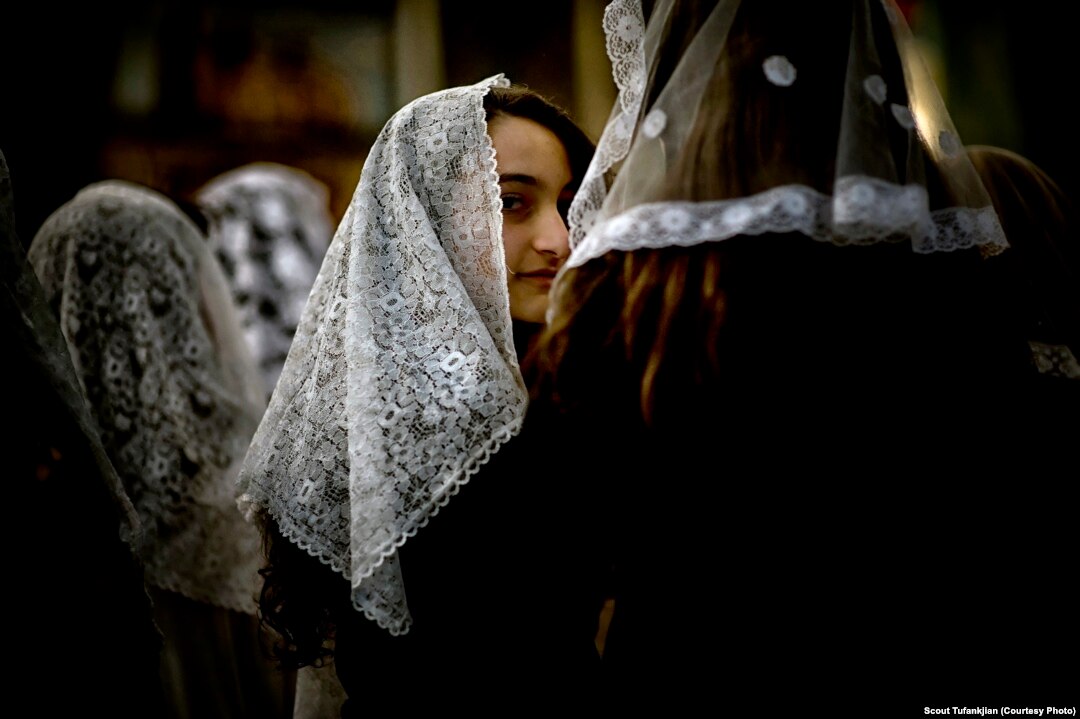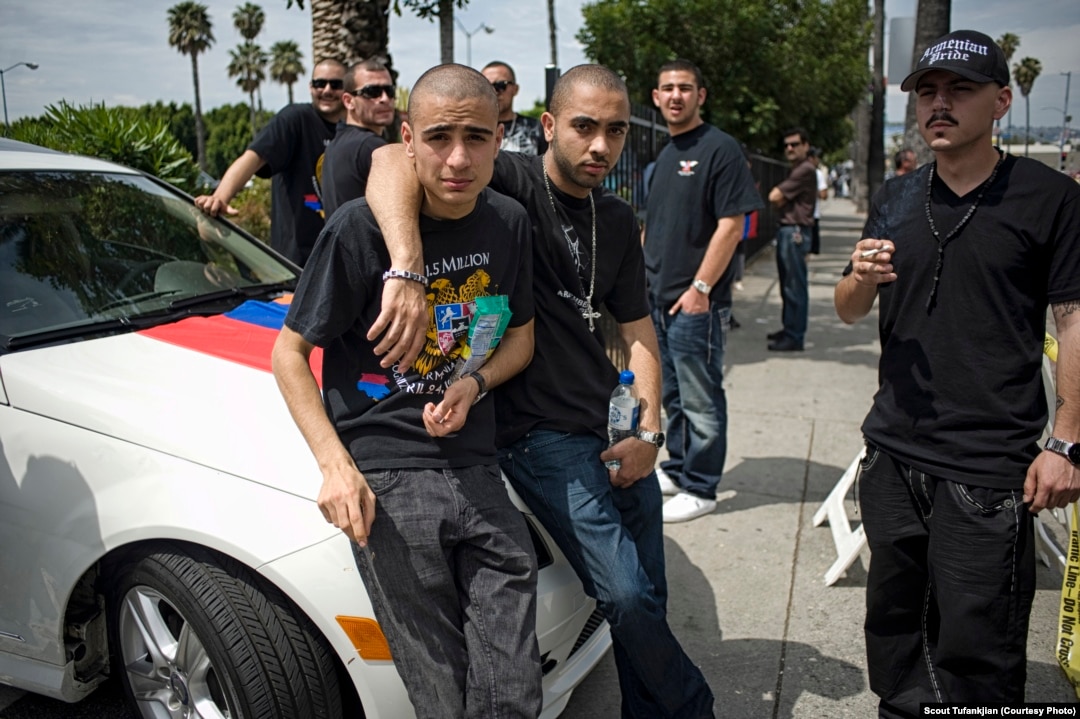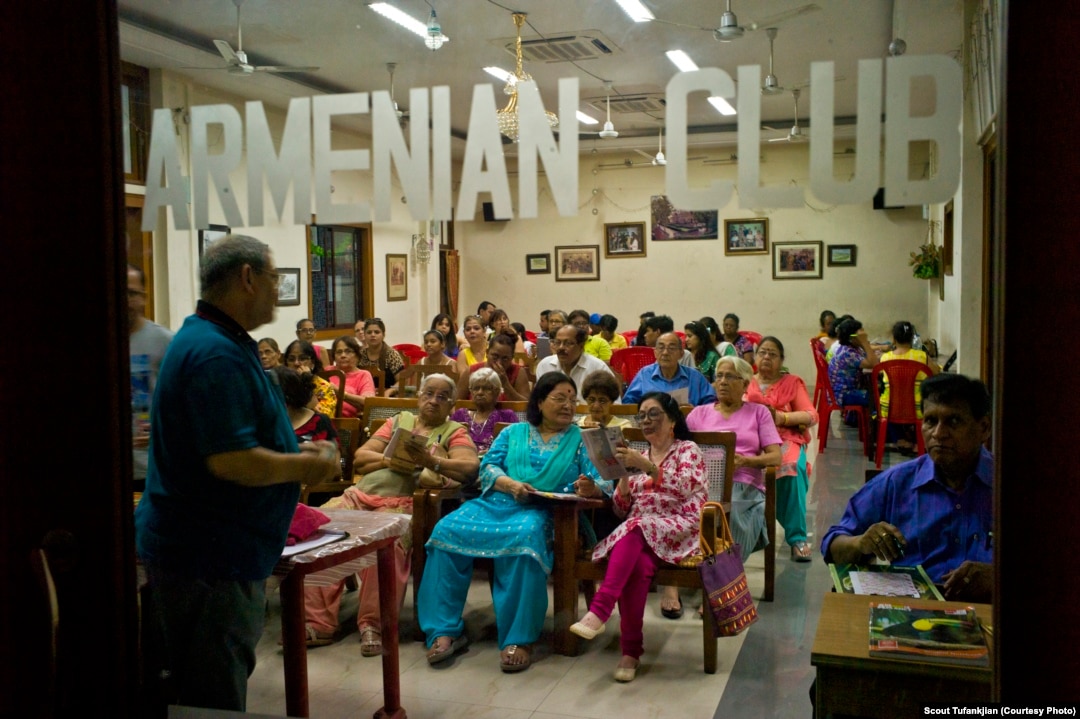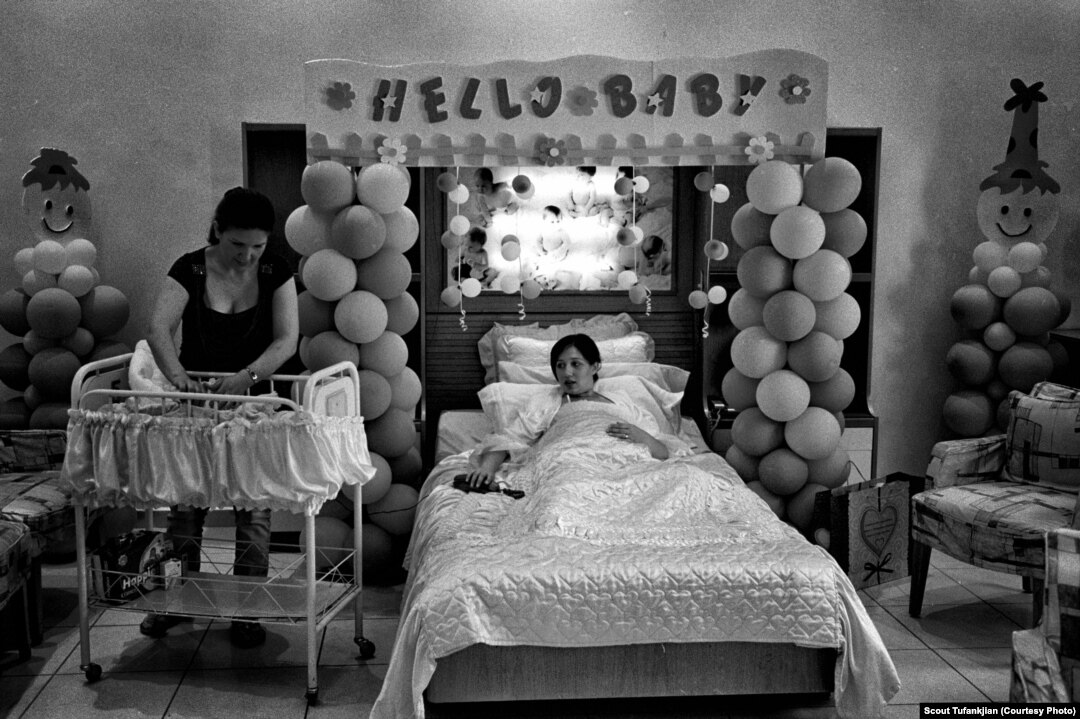'There Is Only The Earth': Images Of The Armenian Diaspora

Tufankjian says no matter how diverse their adopted cultures, an "invisible thread" continues to tie the world's Armenians together. Here, a young girl attends services at the St. George Armenian Apostolic Church in Sao Paulo, Brazil.

Little Armenia, a neighborhood in West Hollywood, California, is home to one of the largest Armenian diaspora communities. "I feel more connection to my clan than to a homeland," one Armenian-American told Tufankjian.

Tufankjian took the title of her book from a story by Armenian-American writer William Saroyan, who wrote: "There is a small area of land in Asia Minor that is called Armenia, but it is not so. It is not Armenia.... There are only Armenians, and these inhabit the earth, not Armenia, since there is no Armenia, gentlemen, there is no America and there is no England, and no France, and no Italy, there is only the earth." Here, an Armenian social club in Kolkota, India.

A maternity room in prewar Aleppo, Syria. Vibrant Armenian communities in Aleppo and Damascus have been decimated by the four-year civil war, with tens of thousands of Armenians fleeing to Armenia, Lebanon, and Nagorno-Karabakh.
Men playing cards at the headquarters of Dashnak, the traditional Armenian political party, in the East Beirut neighborhood of Bourj Hammoud. Some 150,000 Armenians currently live in Lebanon, and are considered a powerful minority. "I feel like I am part of a big dysfunctional family that will always be there if I need them," one Lebanese-Armenian says.
The Union of Russian Armenians Sporting Club, Moscow. As new generations are born abroad, many young Armenians prefer to speak in the language of their adopted country, or to mix it with Armenian. "In Moscow, a lot of Armenians are taking Armenian classes because they didn't grow up with the language, and they want to learn it," Tufankjian says.
Dancing at SummerFest, an annual party organized by the Armenian Community Center in Toronto, Canada. "Toronto is a city that accepts people from all over the world and all walks of life with open arms," a local told Tufankjian. "Ever since I was little 'being Armenian' has just been a natural part of my life."
Tufankjian eventually expanded her range to include Armenians living in the Republic of Armenia, who she reasons are themselves members of the diaspora. Here, preparations for First Republic Day celebrations in the capital, Yerevan.
Tufankjian also traveled to Nagorno-Karabakh, the predominantly ethnic Armenian region located within the territory of Azerbaijan. Here, an Armenian refugee from Syria relaxes in the Karabakh town of Kovsakan.
A student at Galstaun College, a bilingual Armenian and English school in a suburb of Sydney, Australia. "Growing up, I was rejected as Australian due to my ethnic looks," one Australian-Armenian told Tufankjian. "But when I went to Armenia, they rejected me...because in their eyes I seemed to be a fake Armenian, I guess."
The Goksun River in the village of Saimbeyli in southern Turkey. The village, formerly known as Hadjin, had a pre-1915 population of 26,480 Armenians. Fewer than 4,000 people now live there, the vast majority of them Turks.
A swimming lesson at Kowloon Park in Tsim Sha Tsui, Hong Kong. There are approximately 500 ethnic Armenians living in Hong Kong and mainland China.
Rolling dolma, the classic stuffed grape leaves, in Paris. "When I meet an Armenian, it's like we have been friends forever," says one Armenian living in France. "And that, I do not feel it with anyone else. The connection is there right away, due to our ancestors and history."
An Armenian carpet store in Addis Ababa, Ethiopia. Just a handful of Armenian families remain in the Ethiopian capital. "Four generations ago, my family was given [asylum] in Ethiopia," says one. "This is where I find myself, intertwined in this amazing blanket of Armenian tradition mixed with Ethiopian culture, language, understanding, and acceptance. I thank Ethiopia every day of my life for allowing me to love, to breath, to laugh, to sing, to dance. To be."
A mother tends to her 5-year-old daughter in the village of Myasnikyan, in the impoverished Aramir region of Armenia. The family is struggling after a series of accidents and health issues, including snake bite and lightning strikes. Many Aramir residents receive support from diaspora-based groups like the Children of Armenia Fund.
Uruguay is home to one of South America's oldest Armenian communities, estimated at some 19,000 people. Here, two young students play at St. Nerses Shnorhali, an Armenian Apostolic church in the capital, Montevideo.
Church services in prewar Syria, at the Surp Sarkis Armenian Apostolic Church in the capital, Damascus. The church continues to serve as the main gathering point for the city's remaining Armenians.
Members of the the Armenian Gay and Lesbian Association marching in the LGBT Pride Parade in New York. "When I was growing up, there was this very small box that you had to fit into to be a good Armenian," Tufankjian says. "That box is really expanding."
A refugee family from Syria in the town of Berdzor in Nagorno-Karabkah. Many ethnic Armenians spoke to Tufankjian of feeling comfortable everywhere; others felt permanently isolated. "I still feel like an outsider here," one Baku-born Armenian, now living in the United States, told her. "And I'm an outsider in Armenia. So to me I don't know if I'll truly be comfortable somewhere."
Ballet dancers wait backstage at the Alexander Spendiarian Opera and Ballet National Theater in Yerevan. The theater, which first opened in 1930, has been recently renovated and is now run by native-born Rudolf Kharatyan, who returned to Armenia after 20 years performing and running dance companies in Paris, Canada, and the United States.
The last place Tufankjian visited for her project was Anjar, a village in Lebanon, the ancestral home of her great-grandparents and an area where Armenian cultural traditions are almost perfectly preserved. Here, local residents celebrate Surp Khach, or Holy Cross Day, with late-night dancing and eating.
Little Armenia, West Hollywood, California. "Being Armenian feels like belonging to something ancient and permanent, while the modern world is transitory," one Armenian American told Tufankjian.
A young student practices the Armenian alphabet at the Boghossian School in Alexandria, Egypt. "I don't think Armenians have ever fully adjusted to living in the diaspora," one subject told Tufankjian. "In many ways -- financial stability, home, careers -- they have. But there's always a longing for something more...something that always pulls them to not fully be engulfed in the cities and countries they are living in now. They are always searching for something that is lost."

